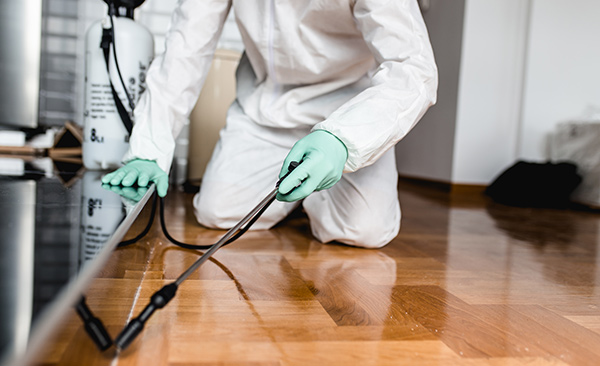Checking Out Problem and Treatment Strategies in the World of Parasite Control
The landscape of pest control encompasses a myriad of difficulties, especially as problems of typical home pests proceed to develop. Recognizing the behaviors and reproductive patterns of these hassles is essential for developing efficient treatment methods. By integrating preventative steps with innovative management methods, such as Integrated Insect Administration (IPM), property owners can better guard their settings. The efficiency of these approaches might vary significantly based on specific situations. What hidden variables add to the success or failure of these strategies in different setups?

Common House Vermin
When it comes to managing our space, comprehending common household insects is crucial. These parasites not only interrupt our convenience but can also pose wellness threats and damage residential property. The most common house insects include ants, roaches, rats, termites, and bed pests.
Ants, frequently seen foraging in kitchens, can pollute food and develop big colonies. Rats, including mice and rats, can create architectural damage and bring diseases like hantavirus and salmonella.
Identifying the indicators of these bugs, such as droppings, nests, or attack marks, is crucial for early intervention (Pest Control Lockhart). Correct hygiene techniques, securing access points, and preserving a clutter-free environment are efficient preventative measures. By identifying these common family parasites and understanding their actions, house owners can take aggressive steps to mitigate invasions, making certain a healthier living environment
Comprehending Pest Infestations
Parasite problems can rise swiftly, turning a minor aggravation right into a substantial problem if not addressed quickly. Usual variables contributing to infestations include bad cleanliness, architectural vulnerabilities, and seasonal modifications that drive parasites inside.
Recognizing the kind of insect is important, as different varieties display varied habits and reproductive rates. Rodents might develop nests in concealed locations while bugs like cockroaches grow in moist settings. Early discovery usually hinges on acknowledging indicators such as droppings, nibble marks, or uncommon sounds, which can suggest a trouble before it comes to be serious.
Environmental problems additionally play a vital role in insect expansion. Cozy, humid environments can assist in the rapid development of parasite populaces, while changes in landscaping or construction can unintentionally produce favorable atmospheres. For that reason, normal inspections and preventative steps are vital to reducing the threat of infestations. An informed strategy to comprehending these dynamics lays the groundwork for efficient pest management strategies in the future.
Treatment Techniques and Strategies
Efficient treatment techniques and strategies are crucial for minimizing pest problems and bring back a secure setting. A multifaceted click this strategy is often best, including chemical, biological, and mechanical strategies customized to the details insect and the seriousness of the invasion.
Chemical therapies consist of making use of pesticides and herbicides, which can successfully get rid of bugs. However, correct application and adherence to safety standards are crucial to lessen risks to humans and non-target organisms. Integrated Pest Administration (IPM) urges the cautious use of chemicals as a last hope, counting instead on tracking and threshold degrees to identify treatment demands.
Biological control techniques include introducing natural predators or bloodsuckers to decrease pest populaces. This technique is progressively popular, specifically in farming setups, as it advertises environmental sustainability.
Mechanical methods, such as traps and barriers, supply prompt remedy for pests without introducing chemicals. Alternatives consist of sticky traps for bugs or physical barriers for rodents.
Eventually, the option of therapy approach must take into consideration the particular pest, the atmosphere, and prospective influence on human health and ecological communities. A well balanced mix of these approaches can efficiently handle infestations while advertising long-lasting bug control options.
Precautionary Actions for House
Proactively attending to bug concerns before they escalate is essential for preserving a healthy home setting (Pest Control Lockhart). Applying efficient preventive steps can substantially lower the probability of problems, ultimately safeguarding both your residential property and health

Appropriate landscape design additionally plays a crucial function in prevention. Maintaining shrubs and trees cut away from your house minimizes the opportunities of insects finding their method indoors. Make sure that drainage systems are working successfully to protect against standing water, which can draw in mosquitoes and various other insects.
Lastly, regular inspections are advisable. Routinely looking for signs of insect task permits for very early intervention. By taking on these preventive steps, homeowners can create a setting that is less hospitable to parasites, thereby improving their overall lifestyle and decreasing the need for substantial insect control interventions.
Industrial Parasite Control Techniques
A comprehensive strategy to commercial parasite control is important for services intending to keep a secure and sanitary atmosphere. Reliable strategies include a mix of normal evaluations, staff member training, and the implementation of Integrated Parasite Monitoring (IPM) practices.
Regular evaluations allow early detection of parasite activity, content enabling timely intervention. Organizations should develop a routine timetable for these analyses, concentrating on high-risk areas such as kitchen areas, storage space rooms, and waste disposal sites. Worker training is just as crucial; staff ought to be informed on the indicators of parasite infestations and the significance of reporting them promptly.
Applying IPM techniques helps mitigate pest issues sustainably. This includes habitat modification, such as sealing entry points and reducing clutter, as well as employing natural deterrents before resorting to chemical therapies.

Moreover, collaborating with a licensed insect control supplier makes sure accessibility to professional understanding and advanced treatment alternatives. This collaboration can cause personalized insect control prepares customized to the specific click here for info needs of business, reducing dangers and improving total efficiency. Inevitably, a positive and enlightened technique promotes a pest-free setting, safeguarding both public health and wellness and company reputation.
Verdict
In final thought, effective insect control demands a detailed understanding of common home insects and their behaviors, combined with targeted therapy methods. Applying precautionary actions alongside treatment approaches such as Integrated Pest Administration and organic control boosts the ability to reduce invasions.